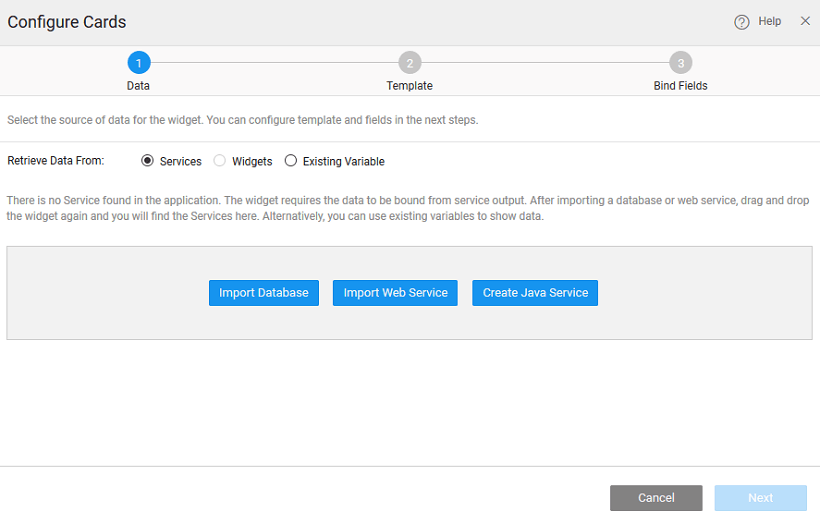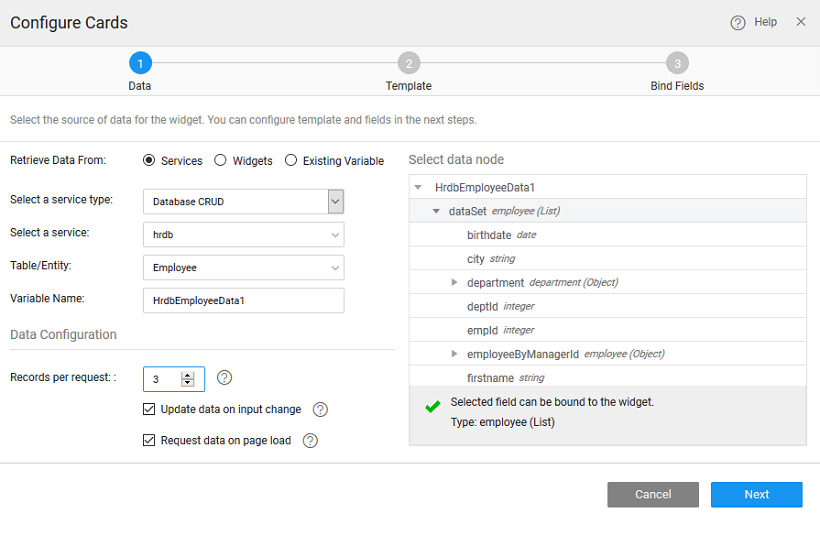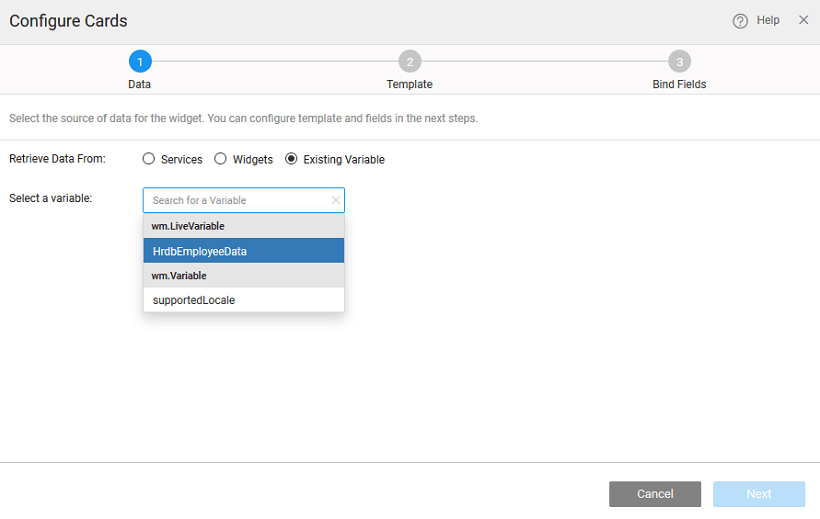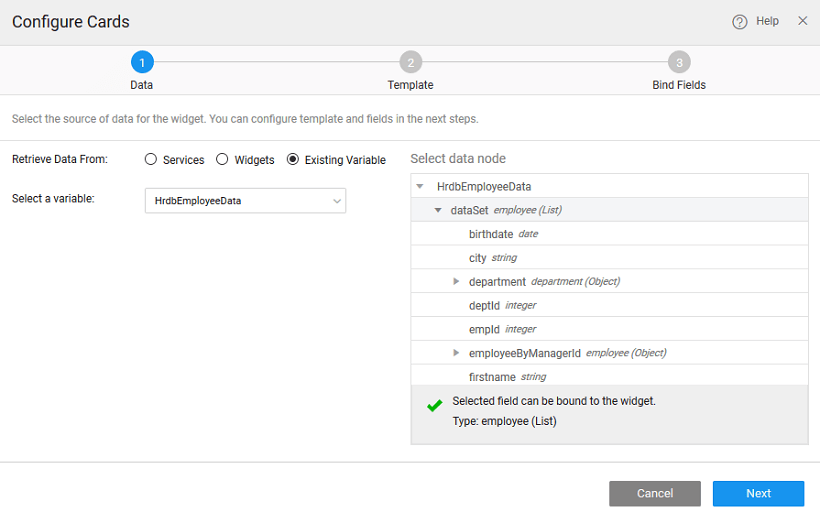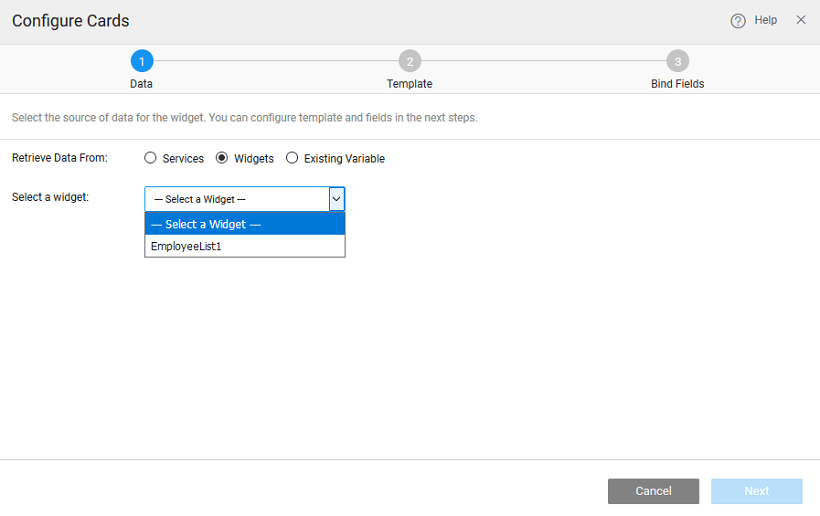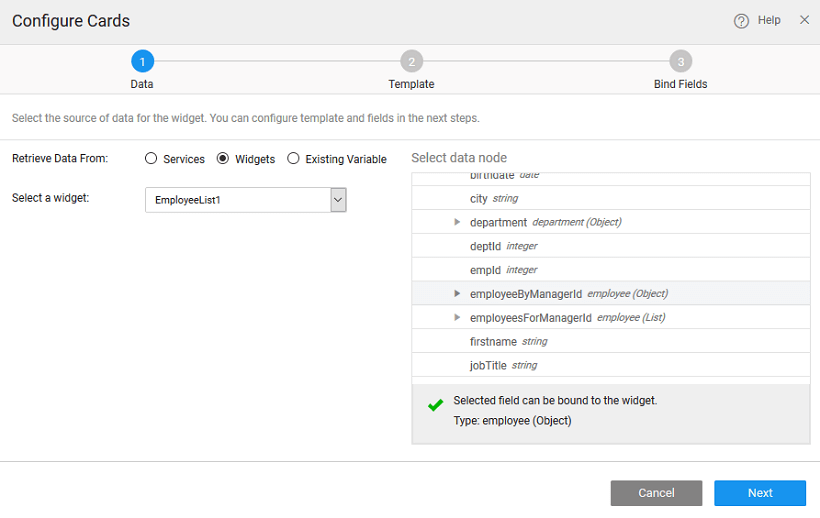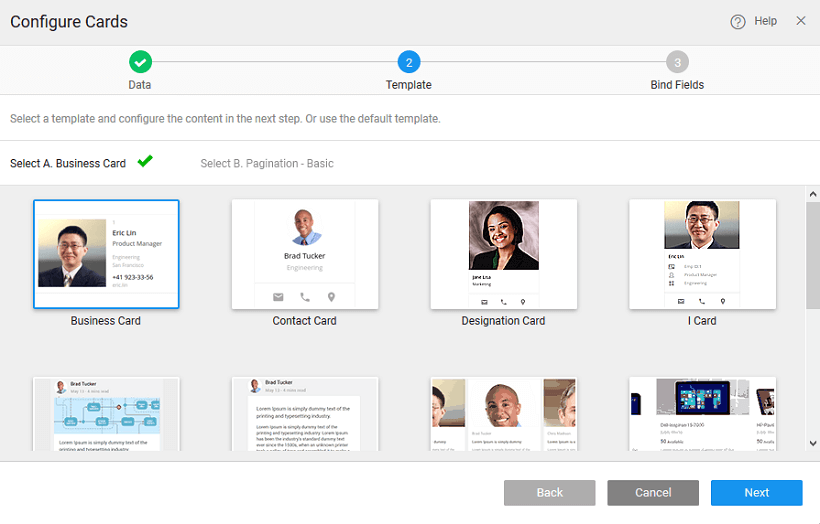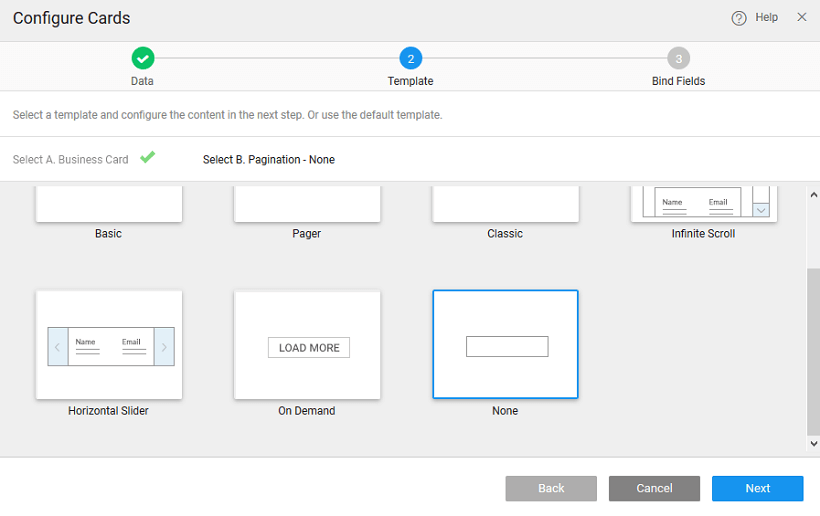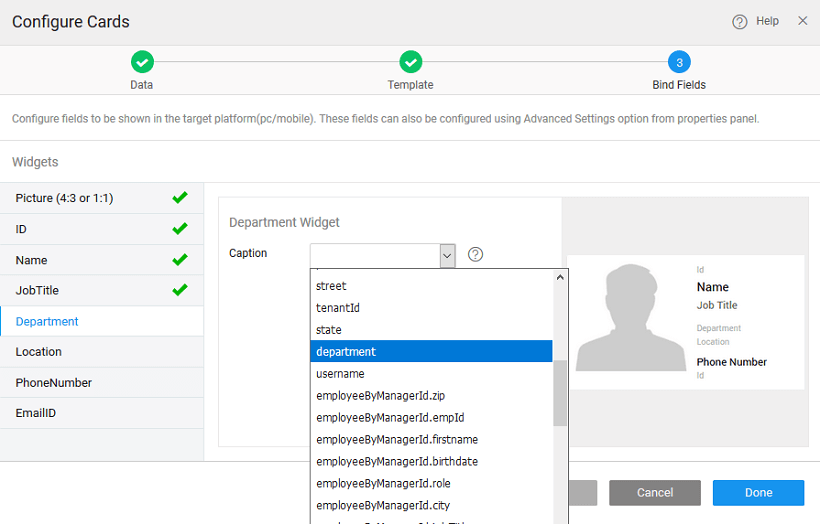Creating Cards
Creating Employee Cards
Cards represents view of items that are rendered responsively across a wide range of mobile devices and screen sizes.
To bind the Cards to your back-end services data, drag and drop the Cards Widget onto the canvas.
STEP-1: Select Data
There can be different scenarios to deal with when configuring your Cards Widget with a data source. The data source can be in the form of a service - database, web or Java; or from an another widget on the page.
Example 1: When No Service or a Variable is Created
You do not have any service available in your project. In this scenario, you cannot create variable because there are no services available in your project yet.
Retrieve Data From
- Select the Services option.
- You will be prompted to Import Database or Import Web Services or Create Java Service. Click the appropriate option to proceed.
- When the service is available in your application, proceed by selecting the service and follow the same steps as mentioned in example-2.
Example 2: With an Existing Service
When you have a service integrated in your app, for example, Database, Web Service, or Java Service.
Retrieve Data From
The Services option is selected by default.
Select Service Type
Select Database CRUD from the dropdown. Retrieving the data From Database CRUD service.
Select a Service
Select a service from the drop-down which lists the services available in your application.
Variable Name
Once you select the service and Table/Entity for the service, a default variable will be created for you – see the Variable Name field populated by default which will be holding the dataset of the service. You can change the Variable name.
Select data node
You are given the option of choosing either the entire dataset – when you are binding the widget to a data source or any of the fields in the dataset. Select data node tree when binding a single widget or a List item to a field in the dataset.
Data Configuration Options
You also have the option of setting the following Data Configuration options.
Records per request
Records per request gives an option to enter the number of records that you can fetch on each request. This will define the pagination behavior of the List. The default is 20, for this example, we set it to 3.
Update data on input change
Update Data on input change is checked by default. This means that whenever there is a change in the input parameter or filter field of the variable the data will be fetched from the service. This option will have an impact on the app performance.
Request data on page load
Request data on Page Load is checked by default. This allows for data to be shown when the page is loaded. If this is not checked, you will not be able to view the data when the page gets loaded. Instead, No Data Found message appears on the widget at runtime.
Example 3: With an Existing Variable
If the variables are already created in the project, Variable Access.
Retrieve Data From
Select Existing Variable
Select a Variable
From the drop-down list of the variables available in the application. You can select the one needed to bind the List Widget to. You can also search for a specific variable by typing in select variable option. If you are able to find your variable in the drop-down select the same.
- When you select the variables, it shows the dataset that it is bound to.
- Data Configuration options are already set for this variable, so you do not see those options in this scenario.
Modify data request configuration
Configure Records per request, Update data on input change, Request data on page load from the variable dialog.
- Select the Card item from the page.
- Navigate to Card Properties and go to
Dataset: Value. - Click the
Value:linkto open the Variable dialog. - Update the Properties tab and save & close.
For modifying widget data settings, you must modify the data-variable and not the actual widget settings.
Example 4: Binding to Widget
Retrieve Data From
Select the Retrieve Data From option as Widgets.
Select a widget
Select a widget from the drop-down list. This will list the widgets present on this page, you cannot access the widgets from other pages.
select data node
You can select data node to be the entire widget or the selected item node in case of another Data Table or List or Cards or result from a Live Filter.
Since you are not using a Variable the Data Configuration options will not be available.
STEP-2: Select Template
Select A: template
In this step, you are expected to select a template suitable for the current use case.
Select B: pagination
Choose one of the pagination options provided.
STEP-3: Binding Data Fields
The template selected in the step-2 provides a set of widgets that should be bound to the corresponding field from the data source configured in the step-1. Select the widget and bind to the corresponding properties by selecting the field from the drop-down list.
| Widget Fields | Caption |
|---|---|
Field -> department | Caption -> department |
Design
You can add widgets from the canvas, change the properties at the card and at widget level.
Run
Click on Preview button to test run the app.

